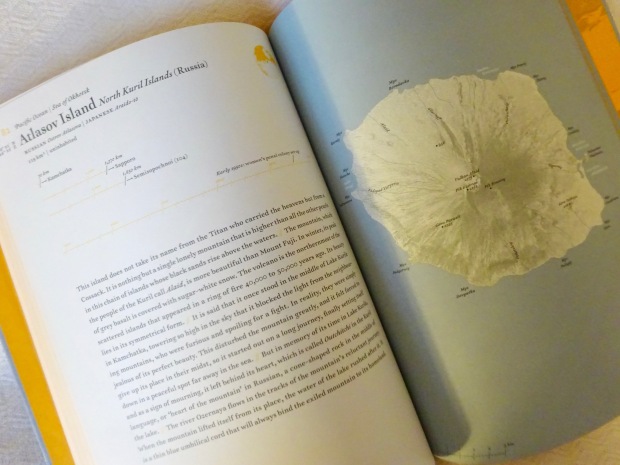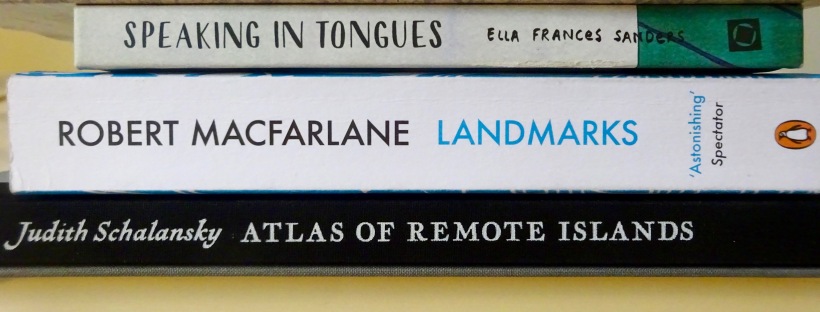This November marked the second year of #NonFictionNovember, a reading challenge hosted by Olive (from abookolive) and Gemma (from Non Fic Books). The challenge aims to encourage people to pick up more non-fiction books throughout the month than they might normally.
I enjoy reading non-fiction, but I generally read a lot (and I mean A LOT) more fiction. I reckon the ratio is probably something like one non-fiction book for every ten-ish fiction, so I was pleased that I managed to finish three non-fiction books in November – even if one was very short! They were:

Landmarks by Robert Macfarlane
Robert Macfarlane summarises his book very succinctly in the introduction: “This is a book about the power of language – strong style, single words – to shape our sense of place.”
Within the world of non-fiction, I particularly enjoy nature writing and books about language, so it’s no surprise really that I loved Landmarks. Each chapter takes inspiration from a different author and landscape, and between each chapter there is a thematically-grouped glossary of terms Macfarlane has collected that describe the land, and life in close proximity to it. Many of the words in these glossaries have been taken from regional dialects of English and/or have fallen out of common use. Most are wonderfully specific, and reminded me of how creative language can be, and how it can help us to understand our surroundings. Here are a few of my favourite terms:
aquabob, clinkerbell, dagglet – all words meaning ‘icicle’
drunken-charlie grass – tussocky moor grass that causes the walker to stumble with the appearance of drunkenness
watery-headed – anxious about rain
However, I think I would have enjoyed this book more if I had taken more time over it, and perhaps only read a chapter and its accompanying glossary at a time. There is no great over-arching narrative other than a strong sense of place, and I think reading a little at a time would have prevented it from feeling slightly repetitive in places.
Atlas of Remote Islands by Judith Schalansky
This has been on my shelf for far too long, and was top of my TBR for this reading challenge, so I’m really glad I finally picked it up. It is without a doubt one of the most beautiful books I own. Look at that saffron yellow against the blue-grey! Dreamy.

In the introduction, Schalansky writes lyrically about maps and art and travel (side note – the translation is excellent):
In an atlas, the Earth is as flat as it was before explorers pinned down the white spaces of enticingly undiscovered regions with contours and names, freeing the edges of the world from the sea monsters and other creatures that had long held sway there.
The rest of the book is set out in double-page spreads, each dedicated to a remote island. The page on the right shows a map, while the page on the left gives a written account of the island. These written accounts, though brief, cram in all the ‘hard’ facts (population, geographical coordinates, size, distance from land etc.) as well as providing a snapshot story of life on the island. Sometimes these are factual or historical, sometimes they feel like old legends, sometimes more like philosophical musings. They are always poetic and evocative. This is such an unusual book, but I can’t recommend it enough!
Speaking in Tongues: curious expressions from around the world by Ella Frances Sanders

This was right up my street. Funny, informative and beautifully illustrated, Ella Frances Sanders has collected 52 idioms from all around the world, complete with translations and explanations of the meanings and origins of the phrases. This would make a great Christmas present for anyone interested in language and fun sayings. I’m looking forward to working “not my circus, not my monkeys” (Polish, nie mój cyrk, nie moje małpy, “Not my problem”) into conversation soon…
Did you take part in the reading challenge? Let me know if you have any recommendations (non-fiction or otherwise)
